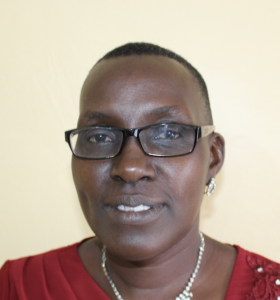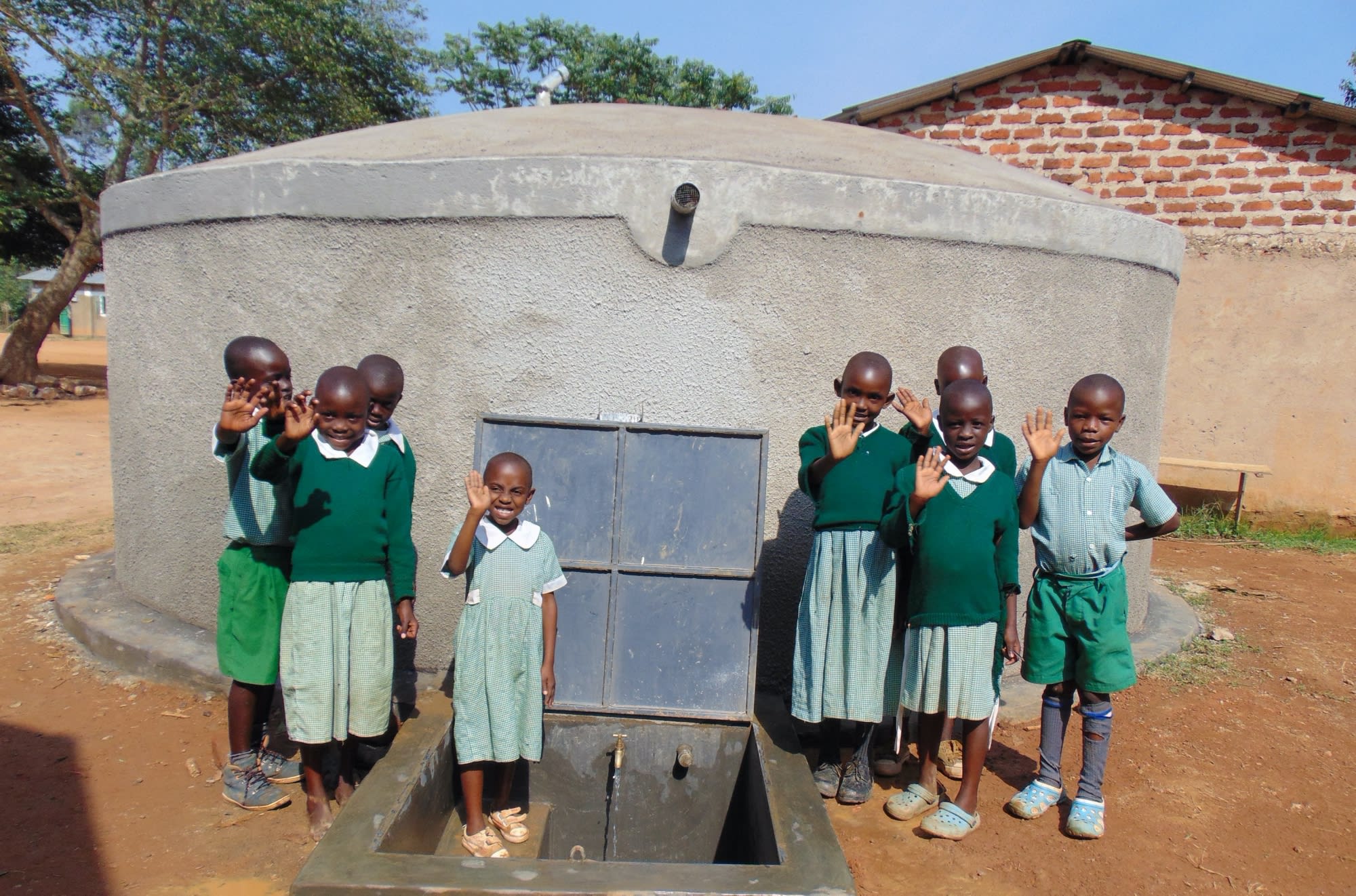St. Charles Lwanga Itulubini Primary School started in the year 2009. It was the joint effort of the community and St. Anthony Catholic Church. Their children were having to walk to Lubambo Primary School which was far from their homes. Lwanga Itulubini started with just two classrooms, two teachers, and 30 pupils. Enrollment has grown over the years and stands at 313 students today, ranging from early education age to grade eight.
Students study math, science, social studies, English, Kiswahili, and religion. A normal day for a student at Itulubini Primary School starts at around 6 am in the morning as they prepare for the walk to school. They arrive at school by 7 am with books in hand and ready to do some cleaning work. They then join the others to go back out into the community to fetch water from the spring. This will be used for drinking throughout the day. The bell rings at 8am but due to the queue at the water point, many pupils aren't back with their water in time. Most of the students return home to each lunch with their families and return for afternoon classes by 2 pm.
Students have to walk to the spring every day because there isn't a reliable water source on school grounds. There is a black plastic tank that holds rainwater, and the rainwater inside often doesn't last until the next rainy day.
The community spring is far from the school. It is heavily relied on by community members who assert themselves as the primary users and force the students to wait at the back of the line. A lot of other activities go on around the spring, too. Women do their family's laundry and hang it on the bushes to dry, while other community members use the spring's water to brew alcohol.
The spring itself is flooded and students often get wet as they fetch water. Others don't want to wait for their turn at the discharge pump and dunk their containers directly in the flooded water.
The pupils waste a lot of class time at the spring collecting water, and this has contributed negatively towards their academic performance. Congestion at the spring has always caused conflict between the pupils and the villagers. Absences are very high because there are always pupils suffering from stomachaches. Others opt to remain at home because they don't want to make the trek to fetch water.
"Lack of clean water in the school has been a big setback to the productivity of the school; sanitation conditions in the school are pathetic as a result of lack of water. Students spend a lot of their time at the spring instead of being in class, the cases of absenteeism as a result of sickness caused by drinking water that is not clean has been on the rise, and their parents spend a lot of money to treat their children which again deteriorates their financial resources," said Headteacher Mugambi.
"This collectively contributes to the low living standards to the school fraternity."
The school is found in a rural, peaceful village. The area is covered with thick vegetation; most of the trees are evergreen while the grass is currently weathered and brown due to the current dry season. Most of the buildings around the area are semi-permanent structures made of mud.
What we can do:
The school is very needy and in pathetic condition. It needs urgent attention to address the situation, for they require water for cooking lunch, drinking, and for washing the toilets and classrooms. They need enough toilets to ease the overuse and the long lines during class breaks, and thus improve hygiene. They also need training on hygiene and sanitation that will highlight environmental and personal hygiene along with proper care of the proposed water and sanitation facilities.
Training
Training on good hygiene habits will be held for two days. The facilitator will use PHAST (participatory hygiene and sanitation transformation), ABCD (asset-based community development), CTC (child to child), lectures, group discussions, and handouts to teach health topics and ways to promote good practices within the school. The CTC method will prepare students to lead other students into healthy habits, as well as kickstart a CTC club for the school.
Handwashing Stations
This CTC club will oversee the new facilities, such as handwashing stations, and make sure they are kept clean and in working condition. The two handwashing stations will be delivered to the school, and the club will fill them with water on a daily basis and make sure there is always a cleaning agent such as soap or ash.
VIP Latrines
The girls' toilets are almost full. The boys' toilets are in very poor condition because they have cracks in the walls and floors and thus are not stable. The administration has actually advised the kids not to go to toilets alone; they should have at least two or more just in case the pit collapses.
Two triple-door latrines will be constructed with local materials that the school will help gather. Three doors will serve the girls while the other three serve the boys. And with a new source of water on school grounds, students and staff should have enough to keep these new latrines clean.
Rainwater Catchment Tank
A 50,000-liter rainwater catchment tank will help alleviate the water crisis at this school. The school will also help gather the needed materials such as sand, rocks, and water for mixing cement. Once finished, this tank can begin catching rainfall that will be used by the school’s students and staff.
We and the school strongly believe that with this assistance, standards will significantly improve. These higher standards will translate to better academic performance!

 Rainwater Catchment
Rainwater Catchment
 Rehabilitation Project
Rehabilitation Project


































